Decorative, compact and beautiful-waving shrub, Wegel purple, not difficult to grow in his site. In addition to gentle pink inflorescetic bells, adorning shrub almost all summer, Weighel purple has a spectacular, brown-red color foliage. Similar decorative qualities could not help but notice the flower and landscape designers, so at present the perennial is recognized as one of the best plants in gardening parks, gardens and household sites. About how to grow Vegel Purple, read in this article.
Weigla Purple, Botanical Help
- The genus "Weigela" got its name in honor of the German botany and pharmacist for the name of Waygel. A variety of "Weigela Purpure" (Weigela Purpurea) is often found also entitled "Waigel Red". The most popular variety "Weigela Nana Purplenaya" is a miniature (reduced) copy of the view of Waigela Purple.
- This plant relates to representatives of the family of the Family. The genus is considered moistlarly and shadowable, includes about 15 species. In culture, they are grown by no more than 7 types of Weigela.
- Slowly growing, a reprehensive decorative shrub, Wegel, in nature most often can be found in the territory of East Asia and the Far East.
- A leafy dusty-free perennial has tubes, wide-elliptic, simple leaves of an unusual, brown-red shade with cloths around the edges. Decorative color of the leaves becomes brighter and rich if the shrub is planted on an open sunny area.
- The plant forms compact and, at the same time, thick, sprawling the crown of the spherical shape. Weighel purple can reach up to 1-1.5 meters. The diameter of an adult shrub is approximately equal to its height. The annual growth of shoots (both in height and in width) is no more than 10-20 cm, so the culture is considered a slow-growing species. The shoots begin to branch from the base of the curtain. With age, the shoots are decorating, covered by cracking bark, gray-brown.
- Numerous bell-shaped shrubs flowers are located one by one or in groups of 2-6 pieces, richly decorating the entire shrub. View of Weigel Purplenaya is characterized by a spectacular bright pink composure of inflorescence with a yellow zev in the center. It is noteworthy that the color of the inflorescence during flowering is slightly modified: first the blooming buds, but gradually the whites are purchased a brighter, saturated color. The length of one flower - the "bell" is only 3-4 cm.

- Flowers Weighel purple twice a year: in the second half of spring - at the beginning of summer and at the end of summer - at the beginning of autumn, on the shoots of the past and the current year. The second, autumn flowering less lush and abundant. Beautiful purple bells attract attention to no less decorative birds with a long trunk, outwardly resembling exotic hummingbirds. Each period of flowering lasts about a month. After flowering, the plant forms fruits - bivalve boxes with small covered seeds.
- The root system of the plant is well developed and is located in the upper soil layer. In this case, the branched rhizer does not form a stroke (horizontal processes), which means it does not capture the territory adjacent to the plant.
- This type of shrubs is distinguished by high decorativeness and is especially popular in landscape design, for landscaping of park-garden zones, forming a living "green" hedge or creating flower arrangements with other perennials. High popularity is explained by the spectacular decorative appearance of the shrub: its abundant and long blossom. But even after flowering, the perennial with an unusually painted (red-drone) foliage for a long time remains very attractive against the background of the usual greens. Leaves of shrubs do not fall to the most frosts.
- Weigla Purple with favorable conditions can grow in one place to 60 -70 years.

Weigla Purple, planting and planting
The shrub is deservedly considered a unpretentious and endless plant that does not require much attention when landing and leaving. Consider key agrotechnical moments of growing decorative perennial: from the choice of landing site to the conditions of its cultivation in the garden plot.
- Buying Weigel's seedlings purple, it is important to pay attention to the appearance of a young plant and its age. All parts of many years of culture must be well developed, without visible damage or diseases. Best age for landing are seedlings from 3-3.5 years.
- Naturally, seedlings with a closed root system are considered the best instances for planting, i.e., sold in a pot. Such plants are easily driving and adapted in a new place, since when landing the roots are practically not injured, remaining intact in the natural earthen coma flower pot. In addition, such seedlings contain a fertilizer of prolonged action, and do not need additional feeders for the first 1-2 years. Looking out seedlings from the container throughout spring, summer and autumn.
Weighela purple, landing features
Weighela purple is an undemanding plant that easily carries out in a new place. Consider the step-by-step instruction landing a perennial in open ground.

Weigla Purple, place and landing time
- The best time for planting a young shrub is the early spring (end of March - April months). Saplings landed in the open soil in the fall are often not survived and die in winter. Therefore, if the plant was purchased in the fall, it is best to go to spring. Cheap seedlings in an inclined position, falling asleep all the crown of the ground and insteading with dry leaves or sawdust.
- For the landing of Wegel seedlings, it is better to choose a warm, protected from the cold, northern winds to the winter that the plant does not suffer from frozen. In addition, open gusty winds often "break" tender flowers and leaves of Wegel. Well suits the garden plot from the south side of the dwelling or a building.
- As for lighting, a young shrub is better to plant on an open sunny area, although the shadowless Weighela purple grows perfectly in half. It should be noted that in the halftime Wayegel will be worse and less bloom and have not such a saturated color as in the sun.
- The soil for a long-term long-liver should be fertile, loose and moisturized. Almost any garden soils (soup and loam) are suitable, with a sour, neutral or weakly alkaline medium reaction. The plant badly tolerates excessive mooring of the soil or, on the contrary, a long drought. Not suitable for perennials also saline soils.
Weigla Purple, Agrotechnical landing
- Agrotechnology landing shrub is no different from landing other plants. At the bottom of the landing pit, it is recommended to pour about 20 cm of the drainage layer. Small gravel, broken brick or sand suitable as a drainage. The overall depth of the pit should be no more than half a meter. If there is no humus and the ground in the soil and the ground is not fertile, - on the drainage layer it is necessary to pour a nutritional layer of fertile land, thoroughly mixed with fertilizers. Nitroposka (100 g per pit) and compost (1 bucket per 1 pit) are best suited from fertilizers. The optimal soil substrate, as a rule, contains humid, turf and sand in a ratio of 1: 2: 2.
- To improve the survival rate of a seedling, its roots can be treated with a special solution of the growth biostimulator ("radio amateur", "Viva", etc.). When planting a seedling, the roots neatly straighten up, while the root neck is not plugged into the ground, but leave at the level of the earth. So that in the pit has not formed emptiness, the soil after landing is tamped.
- If several instances of Vegel seedlings are planted at once, the distance between them should be from 1.5 to 3 meters, depending on the planned composition.
- After planting a seedling, the rig is rich in water and mulched.
Weigla Purple, care
Weigla Purple does not require much care and needs elementary agricultural events: watering, feeding, trimming and shelter for the winter period.

Weigla Purple, watering and loosening plants
- Considering that Waigela purple does not tolerate dense soil, after each watering the rolling circle should be loosened or mulched. Wood sawdust or peat are used as mulch.
- Watering the shrub is carried out as necessary, without overvailing or long-grained moisture. In the case when the bush is fruitry after the winter, the rich restoration helps abundant watering in the spring.
- Weeding, in the absence of mulch, spend regularly, as weeding grass grows. The loosening and weeding should be carried out carefully, not deep (by 5-8 cm) so as not to damage the surface root shrub system.

Weigla Purple, Pruning Plants
- Every 3-4 years spend the formative, rejuvenating trimming of the shrub. At the same time, all branches are cut off, over 3 years old, the rest are shortened by a third of the length. Some flowers completely cut all shoots, knowing that the perennial is quick and easily restored.
- The procedure is carried out after the first bloom until young shoots have grown. If the time of summer "haircuts" passed, pruning is better to postpone, since then the shrub will not bloom the second time. This is explained by the fact that flower kidneys during the second flowering are formed on the shoots of the current year.
- Sanitary trimming of frozen, damaged or too thick shoots are carried out annually, early spring. Places of sections of large branches are better treated with garden ward.
Weigla Purple, feeding plants
- The first feeding is made in the ground early in the spring. Most often use granular comprehensive fertilizers of prolonged action containing phosphorus, nitrogen and potassium. For these purposes, it will be suitable: urea, potash salt and superphosphate.
- The second feeder is carried out during the bootonization period, thereby providing more magnificent and abundant blossoms of the shrub. For this purpose, potassium and phosphorus-containing fertilizers are ideal (30 g per bush double superphosphate, potassium sulfate). Such fertilizers contribute to strengthening the branches of the shrub and its best wintering.
- In the fall, often carry out the third feeding of the plant wood ash (200 g per 1 m 2) or Mineral Complex Granulated Fertilizer "Kemira-Autumn" (according to the dosage indicated on the package).
- If, when landing under the roots, such fertilizers were introduced as compost and nitroposk, then the next two years of Waigela will not need additional nutrient elements.
- After each feeding, the plant should be abundantly water.
Weigla Purple, Fighting Diseases and Pest
- Weighel purple is resistant to many diseases and pests, so it is very rarely subjected to similar "misfortunes".
- Nevertheless, it is sometimes possible to appear the appearance of leaves of leaves, a disease of mildewing, the defeat of the tool, caterpillars or a spider tick. At the first signs of the disease, the plant is treated with a special fungicide solution ("SWITCH", "Maxim", "Sorrow", etc.) or burgue liquid.
- In order to prevent the lesions of the shrub of fungal diseases, it is possible to spring with a preventive treatment of a plant with a 3% solution "Topcin".
- From pests use ready-made insecticides or releasing herbal climbing of wormwood, garlic or pepper.
- If immediately after landing, the seedlings begin to shrust and wither, possibly the root system of plants amaze the larvae of the May beetle or a bear. Credit with pests will help watering the shrub solution of "carboofos" or "actary".
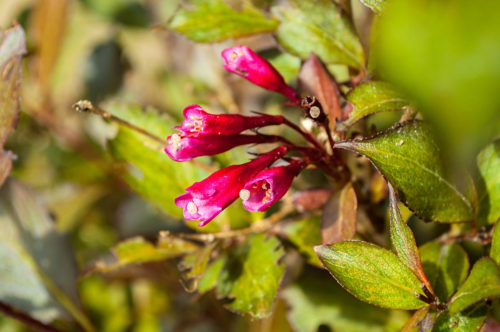
Weigla Purple, shelter for the winter
- The plant is considered moderately frost-resistant, so in the northern regions a shrub for the winter should be stolen.
- Most often, adult bushes Weigel are binding to the twine, carefully beyond the ground, fix the metal bracket and sprinkle the branches of sawdust, leaves, peat or cover with rubberoid (spunbond, Loutrasil).
- Young seedlings can be simply covered with a sweetheart or wrapped with a special dense agrofiber (for example, spunbond).
- The rolling circle also insulation, forming around 20 cm high around the barrel with a height of about 20 cm.
- Some flower gardeners are not flexing the branches, and they are tightened together, leaving in a vertical position, or make a wooden frame. After that, the bushes are wrapped with observer material, inwards you can additionally pour dry leaves. The advantage of the framework is to prevent the strain of the bush during heavy snowfalls.
- In regions with temperate climates and soft winters, adult strengthened bushes Wegel are beautifully winter and without additional shelters.
Weigla Purple, reproduction of the plant
Weighela purple breeds vegetative (cuttings, grooves, pigstock) and generative (seeds) in ways. It is important to remember that the seed method of reproduction does not guarantee 100% of the preservation of the plant's species affiliation.
Reproduction of Vegel Purple Silent
- The most common way of reproduction is the shilling. Moreover, the use of semi-respene cuttings is often ineffective, and the result can be seen only in five years. Therefore, most often the shrub is breeding with green cuttings with a length of about 10-15 cm with the presence of at least 2 sheets.
- For this, in April or in May, suitable shoots are cut, in which the leaves are cut completely or shortening on 1 / 2-1 / 3 part of the sheet plate.
- The cut on the cuticle is made with a sharp knife, smoothly: at the top - above the upper sheet pillow, below - under the base of the bottom sheet pillow.
- After that, the cuttings leave in dark, warmth (+20 0C) the room in the growth stimulatory solution (for example, in "heteroacexine") for the night.
- The swelling edges of the shoots are planted into the container with a sandy peat mixture to a depth of no more than 1 cm, and from above are covered with a glass jar (or a cropped plastic bottle), creating a greenhouse effect.
- Regular moderate watering and ventilating "Greenhouse" will allow cuttings to successfully form the roots a month after the landing.
- Young shoots appearing on cuttings pinch, thereby stimulating anyone else.
- At a permanent place, the strengthened cuttings are transplanted no earlier than after 1.5 years. For the first time, grown seedlings bloom at a biennium.
Reproduction of Weigela Purple
- The reproduction of the shrub with the help of messengers implies the bending of the lowest escapes to the Earth.
- In the place where the branch of the shrub will contact the Earth, make a light cut of the bark and "pinch" his metal bracket to the ground.
- The plot of "contact" is sprinkled with land, providing a regular watering for education at a place of cut of the bark of their own roots.
- Already on the next spring, subject to successful rooting, there will be a full-fledged seedling.
- Before planting a seedling for a permanent place, it will need to be fused about 2.5-3 years.
Reproduction of Weigel Purple Seeds
- The seed method is carried out, as a rule, in greenhouse conditions, in spring.
- Pre-training Seeds Weigel Purplenna do not require. The freshly seed material, the higher there will be their germination. Store seeds for more than 2 years is not advisable, as they quickly lose their germination.
- Seeds should be collected late autumn (in November), when the boxes become dry and begin to crack. In order not to form self-sackers, the fruits of Weigel wrap marley back in September, and in November, ready-made boxes are cut and gently poured on paper for drying. The dried overwhelmed seeds are stored in paper bag in a dry dark place until spring.
- In the spring, the seeds are sown in the prepared boxes with a light soil mixture of sand and fertile soil.
- Sowing is carried out in shallow grooves either superficially sprinkling sand.
- The container with seeds is covered with glass and placed in a warm room. After 2.5-3 weeks, the first searches appear.
- After the advent of the second pair of leaves seedlings of Weigel dive. Thickened crops should be switched.
- You can do without germinating seeds, leaving on the site near the bush largest and strong, independently sprouted seedlings. These seedlings are moving around 2 years, after which they transplanted at a permanent place.
- To grow seedlings (exiled from seeds or grown on their own under shrubs) in the warm season is recommended in containers on the street, in the garden, under a rarefied crown of trees.
Weigla Purple, work calendar
The presented calendar of the work is conditional and may vary slightly depending on the weather conditions and climate of a particular region.
- January February March.
During this period, the wet snow shakes with bushes so that the branch of the plant is not broken under his weight. To protect against rodents, snow around the trunk of perennials.
- April.
The landing of young seedlings Weigel Purplenaya. Sanitary trimming of shrubs begins, frozen and damaged shoots are removed. The old layer of mulching from the rolling circle is removed, the first feeding and abundant watering of the shrub is carried out. Sowing seeds.
- May.
Seedlings of Weigel are dive. Events on protection against recurrent spring frosts are carried out, regular watering, loosening, mulching, weeding.
- June.
Green cuttings, grooves are prepared for the breeding of the shrub, the root piglery is removed. Watering is carried out, loosening and feeding with complex fertilizers. In the event of a disease or pest attack, the plant is treated with special protection means.
- July.
The formating trimming of the shrub (after the first stage of flowering), the blonded inflorescences are removed. Separately fuse and care for seedlings and rooting cuttings. In the event of a disease or pest attack, the plant is treated with special protection means.
- August.
Care of growing cuttings is carried out. Watering is carried out, feeding and loosening.
- September.
Landing or transplanting seedlings Weigel is carried out. Care of seedlings and rooted cuttings continues.
- October.
Preparation for wintering, cleaning of foliage, covering shrubs (including young seedlings), Pumping plot, fertilizer making, mulching of the priority circle. The beginning of the collection of seeds.
- November.
Ending seed collection. Laying bait from rodents.
- December.
At this time, shook the wet snow from the bushes so that the branch of the plant is not broken under his weight.
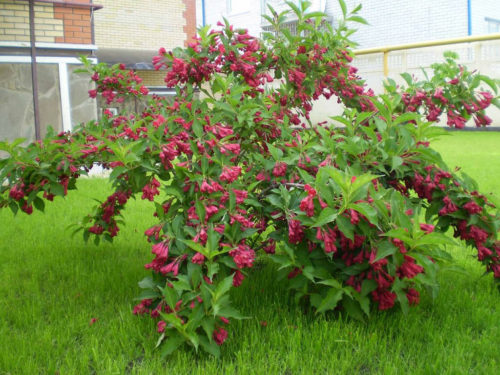
Problems when growing Vegel Purple
With competent cultivation of Weigel Purple and compliance with all rules for the care of the shrub, there is practically no problematic issues.
- If the shrub does not bloom, it was possible that the shoots of last year's shoots were too strong or an excessive amount of organic fertilizers was made to the soil.
- The drying of foliage is associated with a disadvantage of moisture or the appearance on the shrub of such a pest as a web tick.
- The weak development of a shrub, lethargy may indicate pests, damaging the root system of perennial, lack of nutrient elements in the ground or excessive shading of the shrub.
Weigla Purple, the use of the plant
- Decorative beautiful-waving shrub, Weighel purple, widely used in landscape design as a single accent or group living ingredients.
- Weighela purple looks great in any wood-shrub compositions, coniferous landings and mix bears. Unusual coloring of the leaf of shrub looks contrast and colorful against the background of the usual greens.
- Speechly look like a landing of Weigel grade purple "Nana" along the gardens or borders. At the same time, if the plantings are not tight towards each other, there are such perennials such as: fern, host, astilba.
- Shrub is used for landing in private gardens, household plots, in urban parks and squares.
- Often sparkled Kurtins Weigela are combined with other shrubs: a low-spirited barberry, a Japanese quotier, a caticker, viburnum, juniper and cypress.
Thus, any, even a novice gardener, can easily grow on his site a decorative shrub - Wegel purple. Pink flowers - gramophilics will be a long time to delight those around them with their decorative species, and the shrub himself attract the attention of unusual coloring foliage to the most frosts.

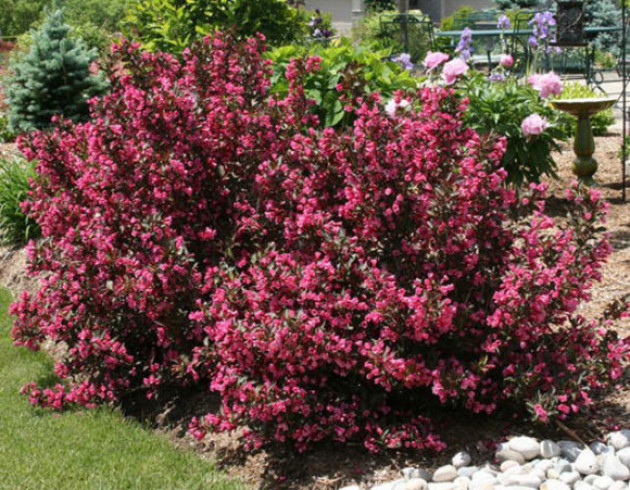
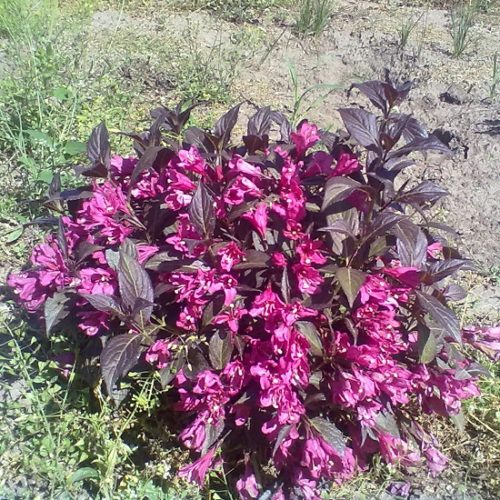

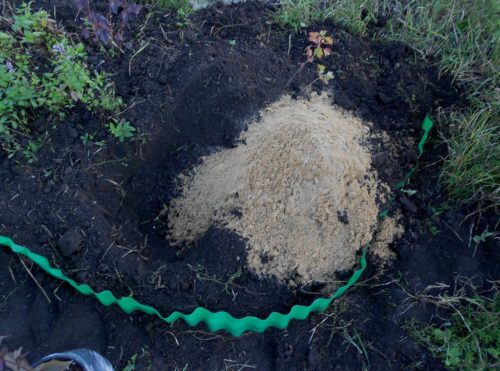

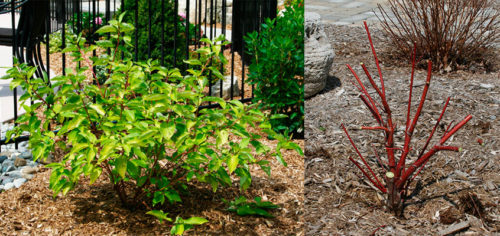

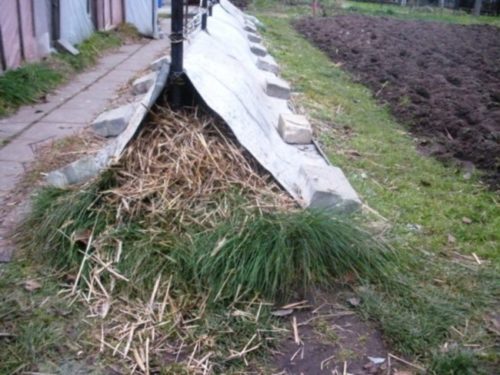
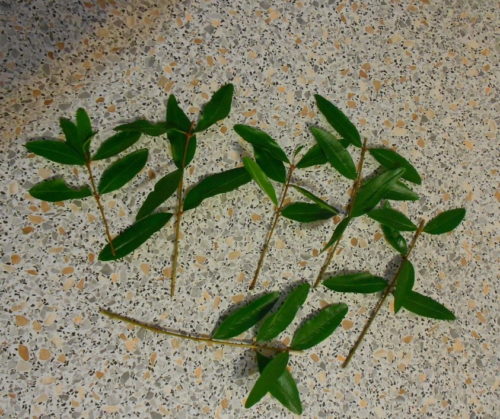


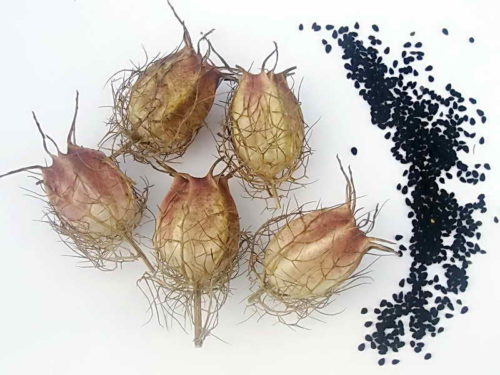


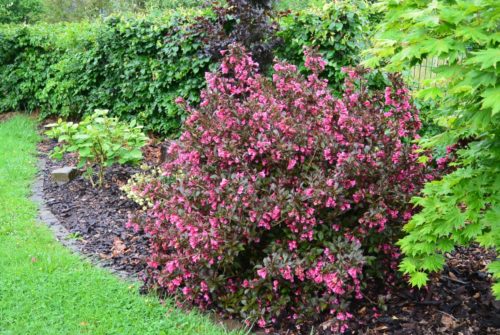

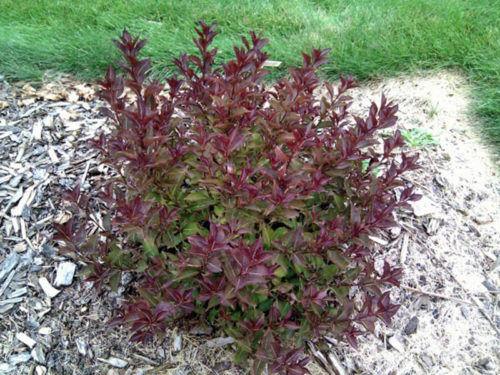













 Start a discussion ...
Start a discussion ...